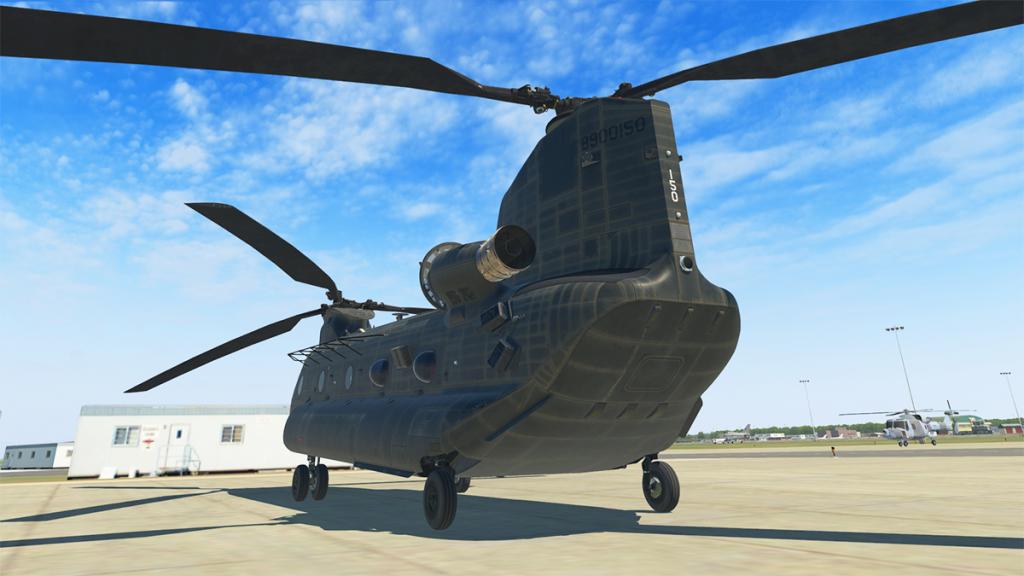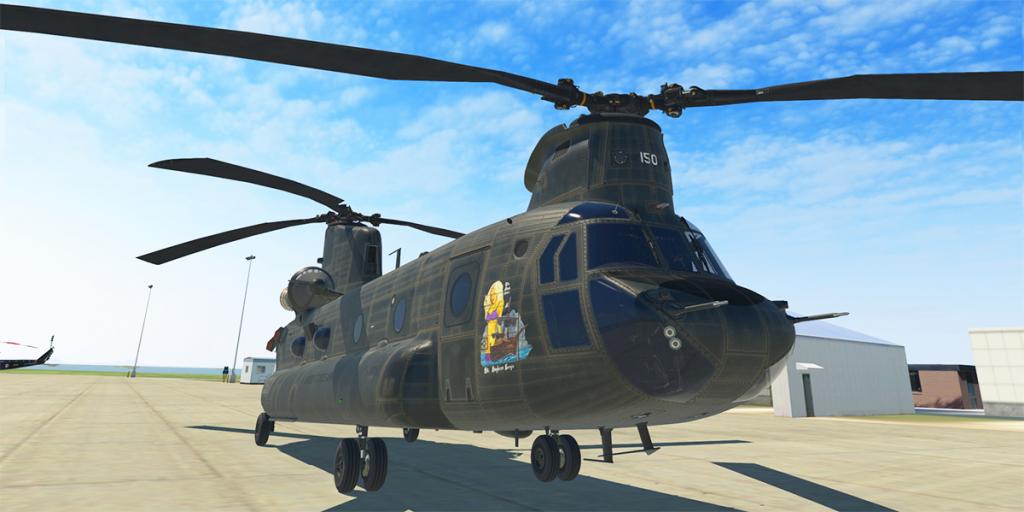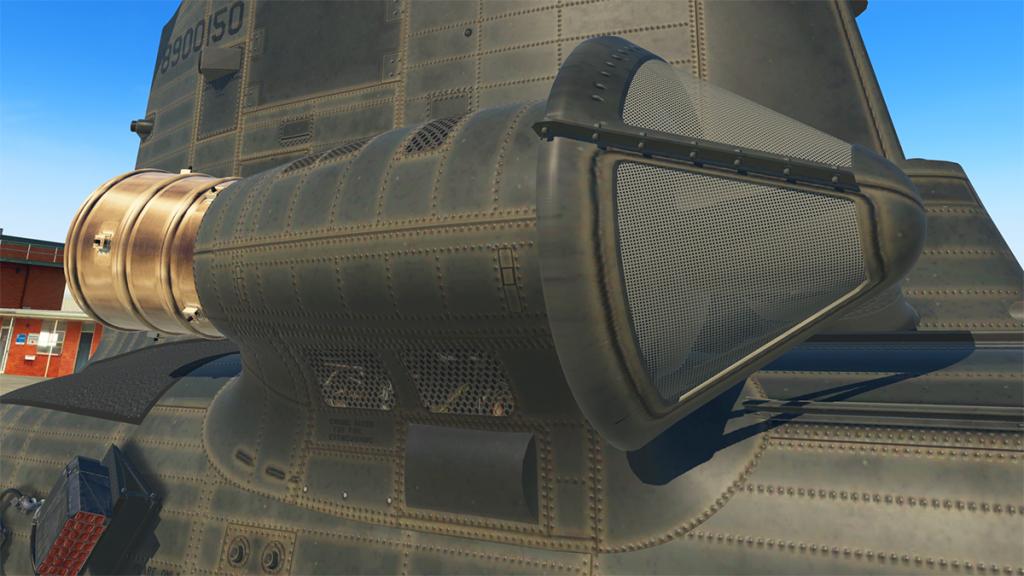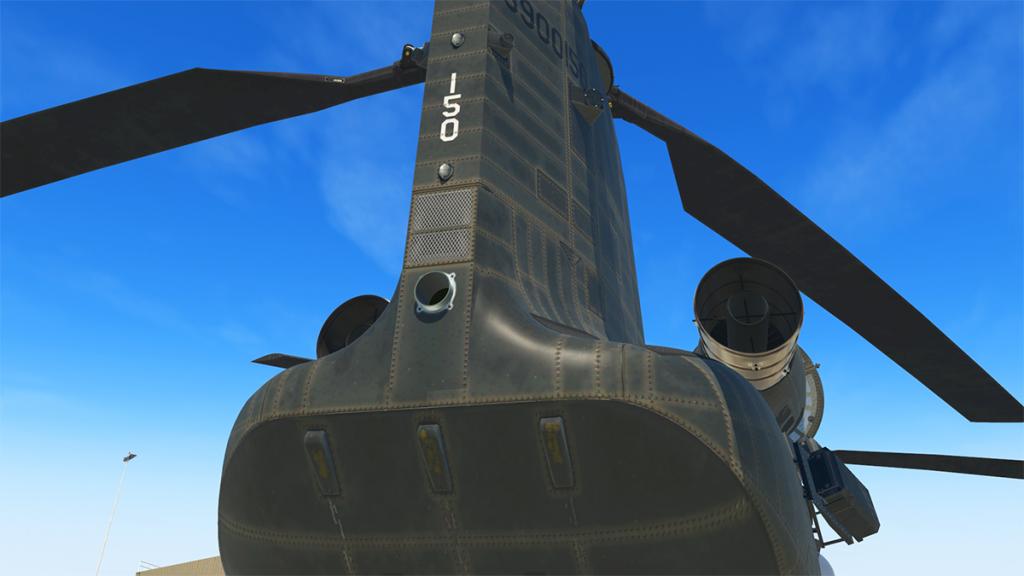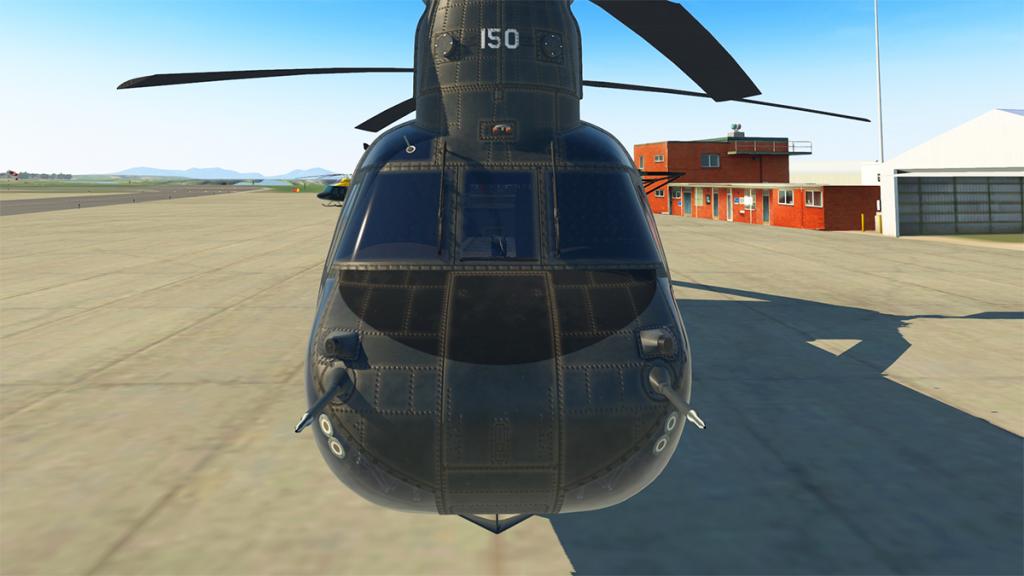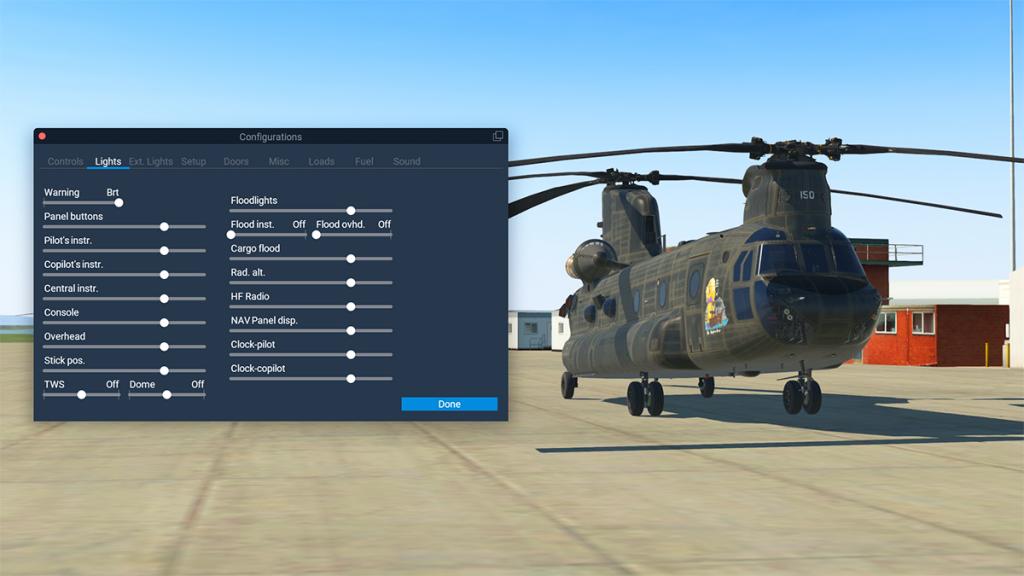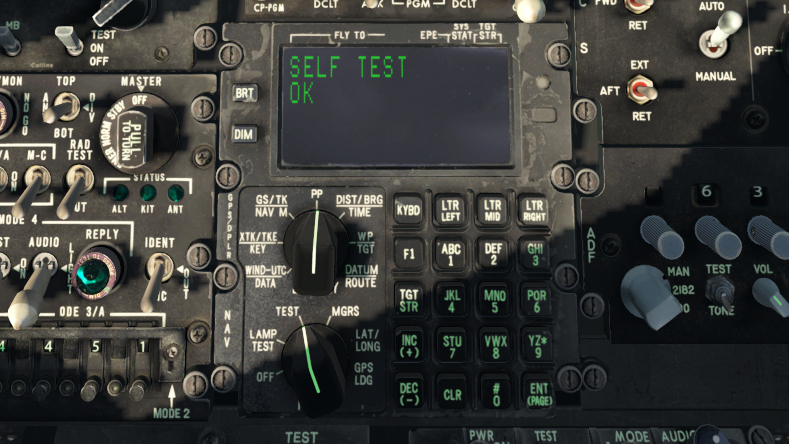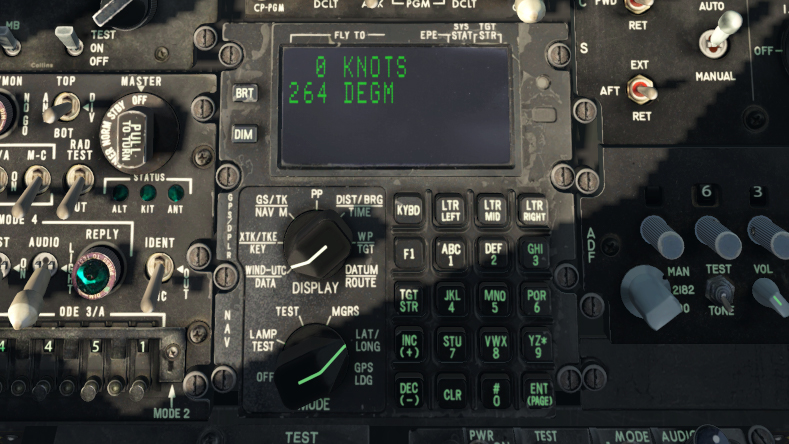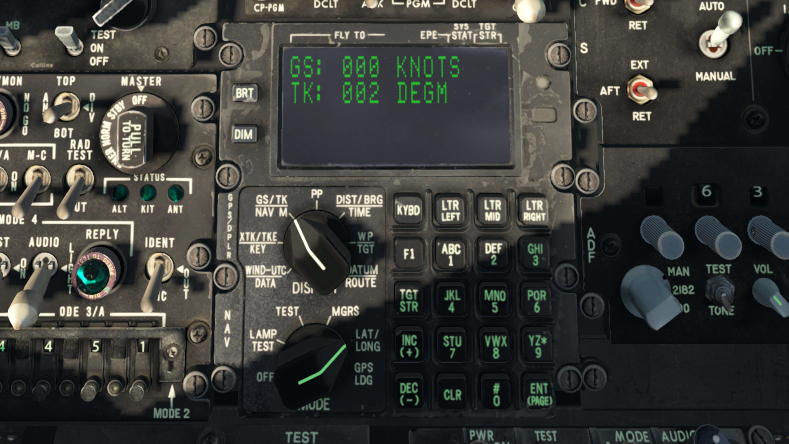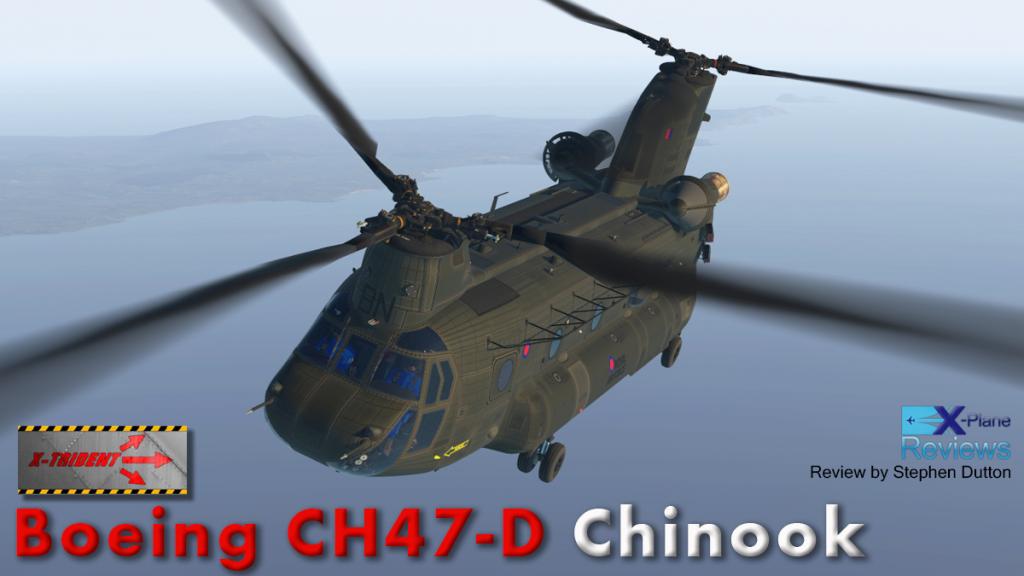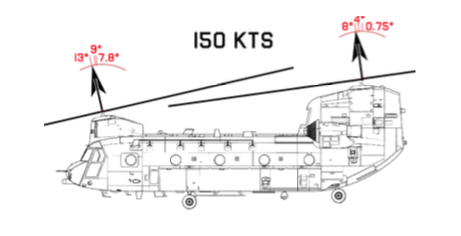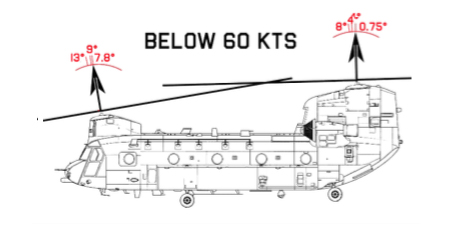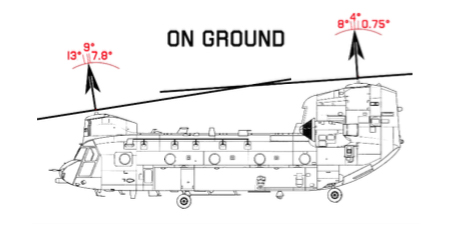Search the Community
Showing results for tags 'chinook'.
-
NEWS! - Aircraft Updated : CH47D Chinook by X-Trident to X-Plane 12 One of the great things about being active in a review site, is that a lot of times you are the bearer of very good news... so yes I'm very happy to announce that the X-Trident CH47D Chinook is now available for X-Plane 12, better news still the release is an update, not a paid upgrade, so the conversion to X-Plane 12 is free! There are no new features, but then again the X-Plane 11 version had a truck load of features, so it was, or could have been hard to add in anything new anyway, but the conversion does cover all the X-Plane 12 facets in performance and windshield effects (rain, ice, de-ice). The CH-47 Chinook is an American twin-engined, tandem rotor, heavy-lift helicopter. The CH-47 is among the heaviest lifting Western helicopters. The Chinook possesses several means of loading various cargoes, including multiple doors across the fuselage, a wide loading ramp located at the rear of the fuselage and a total of three external ventral cargo hooks to carry underslung loads. The internal detail is incredible... all the doors open of course, and in flight! Sensational before, in X-Plane 12 the X-Trident Chinook is simply outstanding, the quality here is overwhelming.... Features include: Highly detailed 3D model with immersive light systems FMOD sounds with user profiles Animated doors and hatch Accurate engine and systems management Accurate AFCS (with support for both self-centering and non-centering joysticks) Accurate 4 axis autopilot with VOR, TACAN, ADF and GPS navigation External loads (with load/save and flight to options) and cargo drop Compatible with Reality XP Animated ground crew Self hiding pilot and copilot Animated custom fuel truck (with drive and self drive modes) Custom control panels Optional chaff dispenser Paint kit Particle effects (heat, disk tip vortices) For a full comprehensive overview of the features and systems of the CH-47D, here is the X-Plane Reviews X-Plane 11 release review: Aircraft Review : Boeing CH47-D Chinook by X-Trident Video is also X-Plane 11, but still very exciting to watch... The X-Plane 12 version of the X-Trident CH-47D Chinook is now available for update or purchase at the X-Plane.OrgStore. Designed by X-Trident Support forum for the CH-47D Chinook ___________________________________ Yes! the Boeing CH47-D Chinook X-Plane 12 by X-Trident is now available from the X-Plane.Org Store here : Boeing CH47-D Chinook-X-Trident Price is US$38.95 Requirements X-Plane 12 or X-Plane 11 Mac, Windows, Linux 4 GB VRAM Minimum - 8 GB+ VRAM Recommended Download Size: 593 MB Current version: 2.0 (April 2nd 2023) ___________________________ News by Stephen Dutton 3rd April 2023 Copyright©2023: X-Plane Reviews (Disclaimer. All images and text in this review are the work and property of X-PlaneReviews, no sharing or copy of the content is allowed without consent from the author as per copyright conditions) All Rights Reserved
-
Aircraft Review : Boeing CH47-D Chinook by X-Trident There are many significantly important helicopters throughout aviation's history, From the early Sikorsky R-4, Fairy FB-1 Gyrodyne, Sikorsky S-55, Bell 45/H-13, to the 50's in the Bell UH-1 Iroquois and in later decades the S-61 Seaking, CH-53 Sea Stallion (S-65), UH-60 Black Hawk, CH-53E Super Stallion ... but in twin-rotor form there has been fewer significant designs... The Piasecki H-21 (Vertol) and the Boeing Vertol CH-46 Sea Knight is another, but think of any heavy Twin Rotor helicopter and really only one aircraft comes to mind... The Boeing CH-47 Chinook. The CH-47 totally defines twin rotor machines, in even that the first model flew as nearly 60 years ago on 21 September 1961, it is still today the primary go-to aircraft for heavy-lift operations and is still in service with most major armed forces and most significant commercial operators around the world today. The Chinook is simply an unbeatable, irreplaceable machine in this heavy helicopter category. The Chinook version and variant list is as long as your arm, highly modified, but also still very relatable to that very first Vertol V-107 model it was originally developed from. Officially the Boeing CH-47 Chinook is an American twin-engined, tandem rotor, heavy-lift helicopter developed by the American rotorcraft company Vertol and manufactured by Boeing Vertol (later renamed Boeing Helicopter and now named Boeing Rotorcraft Systems). The CH-47 is among the heaviest lifting Western helicopters. Its name, Chinook, is from the Native American Chinook people of Washington state, United States. The Chinook was originally designed by Vertol, which had begun work in 1957 on a new tandem-rotor helicopter, designated as the Vertol Model 107 or V-107. Around the same time, the United States Department of the Army announced its intention to replace the piston engine-powered Sikorsky CH-37 Mojave with a new, gas turbine-powered helicopter. During June 1958, the U.S. Army ordered a small number of V-107s from Vertol under the YHC-1A designation; following testing, it came to be considered by some Army officials to be too heavy for the assault missions and too light for transport purposes. While the YHC-1A would be improved and adopted by the U.S. Marine Corps as the CH-46 Sea Knight, the Army sought a heavier transport helicopter, and ordered an enlarged derivative of the V-107 with the Vertol designation Model 114. Initially designated as the YCH-1B, on 21 September 1961, the preproduction rotorcraft performed its maiden flight. In 1962, the HC-1B was redesignated CH-47A under the 1962 United States Tri-Service aircraft designation system. The Chinook possesses several means of loading it's various cargoes, including multiple doors across the fuselage, a wide loading ramp located at the rear of the fuselage and a total of three external ventral cargo hooks to carry underslung loads. One of the most substantial variants to be produced was the CH-47D which is this model version here, which first entered service in 1982; improvements from the CH-47C standard included upgraded engines, composite rotor blades, a redesigned cockpit to reduce workload, improved and redundant electrical systems and avionics, and the adoption of an advanced flight control system. The CH-47F with the newer avionics, that include the Rockwell Collins Common Avionics Architecture System (CAAS) cockpit, and BAE Systems' Digital Advanced Flight Control System (DAFCS) was rejected on the grounds that the CH-47D was a more significant "Old School" model, but the aircraft here does still have the required significant systems built in to aid flying the machine. This is not X-Trident's first helicopter for the X-Plane Simulator. That was the magnificent Bell AB412, so you will already expect a lot from their new Chinook creation. The bar with the AB412 was set early very high, not only in the quality of the machine, but in the features and excellent flying performance, and the aircraft is certainly a staple go-to helicopter for reviews, and in some ways one of the best helicopters in X-Plane, but the absolute pro's will always debate that factor. The AB412 is actually an old design now as it was released back in 2014, the AB412 is however not a dated design, in fact with the consistent updates over the years it feels perfectly modern and totally realistic in this later date. To note that besides the AB412, X-Trident have also released a Panavia Tornado GR4 and a very nice McDonnell Douglas Harrier AV-8B. After a very long development time as the aircraft was announced as far back as 2018, you were expecting a lot from X-Trident's new mega bird, thankfully we are not at all disappointed... This X-Trident "Chinook" is however not the first one available in X-Plane, as another Boeing CH47-D Chinook was created for X-Plane v9.70 by Brett s, X-Plane's resident helicopter Guru, with Brett s involved that CH47-D flew very well, but it is now also 12 years old. To note that Brett s has also had a huge impact on creating this current X-Trident version, in both feedback and detailed instructions on the 47D aircraft and of course the heavy testing. At X-PlaneReviews we can be say... a little rough on a lot of developers in the quality stakes. No doubt a lot of the developers work hard and deliver amazing aircraft, but from our perspective they are always up against the sort of ultra development work as shown here. This level of quality and design, it then goes and lifts the level up to another higher perspective, and once seen you can't simply un-see this level of quality and craftmanship, so the boundary goes ever higher, what was brilliant even three or four years ago, now today looks average. The early pundits are already high here, exceptional, brilliant... "take your breath away" are all accolades that refer to the detail and design presented here from X-Trident... The textures and normals (NML) work here is simply breathtaking, there is an overwhelmingly solid and perfect detail in the panels and the rivet work, finer detail like fuselage mesh vents are also perfection, highly, highly realistic, your eyes are everywhere in want to absorbing in the myriad of details. The aircraft uses the Lycoming T55, now Honeywell T55-GA-714A later version 4,867 shp (3,631 kW) engines, the earlier T55-L-714 had only 4,110 shp (3,066 kW), so the uprated "A" version had a significant power increase over the original installation, and an increased sling capacity of 26,000 lb. The T55 engines have both been exceptionally reproduced here, not only the authentic outer exhaust and inner cone, but the jaw-dropping inlet mesh (screen) that reeks of realism. Hidden behind the (upper) mesh is the extraordinary detail of both the T55 engines and the gearboxes. Note the also expertly detailed infrared countermeasure flare containers. The aircraft uses a Solar T62-T-2B Titan APU (Auxiliary Power Unit) 95 hp (71 kW) at 56,700 turbine rpm, and you can see the well detailed mesh (again) inlet and circular APU outlet. The glass work here is also exceptional, beautifully curved with lovely depth, and looks simply highly realistic in most environments, reflections are also perfect. The trick is not the glass itself, but the way it is intergrated into the modeling that makes it so perfect, and so it all is here. You love the glass, but the exceptional detail behind it also takes your breath away in the extreme detailing of the rudder pedal hydraulics and associated piping and assemblies. The overhead panels are however clear and not shaded green. There are four circular windows (five if you count the hatch) on each side of the fuselage, and you can have the choice of a single or dual bubble windows at the rear of the two windows. Glass quality is again exceptional, including the visible poly layer at the right sun angles. In reality the fixed landing gear on the Chinook is quite simple. Twin front pairs and a single rear pair is all you need... on the front not much is shown, but note the nice disks and labels from the braking system. The single rear wheel gear assembly is far more visible (if you get right under the machine), and the gear assemblies with the associated piping work is a work of art by itself and the gear assemblies are animated. Fixation is always on the rotor assemblies on any helicopter, it is the core component of the machine. The X-Trident AB512 was exceptional in this case, not only highly detailed, but also fully animated... we expected the same. You get half of the deal here anyway... The head assembly detail is of course again exceptional, beautifully done. You can spend hours dissecting the rotor head all into all the components, levers and rods, incredible modeling. But the head is static, and not animated... the point to make is that a rotor head of this complexity and size would need the extra power to move it, in other words hydraulic pressure or strength power. So in reality the components would not move unless the heads are active, the fast moving components would be hard to see anyway... so why bother? The rear rotor head is just as complicated, but with the nicely different colour bands on the arms and nuts for difference. Overall you have exceptional detail and modeling that really brings out the authentic feel of the "Chinook". You really can't ask for more can you. Before we move to the interior, then we will stay external and look at the extensive menu system. Menus The menu system is positioned within the main X-Plane Menu header line. There are two lists of menu options; Load, Options, Toggle FPS and Show FMS... Load: Allows you add an "Ground Object" this is for the sling load option. Toggle FPS: brings up the usual default X-Plane framerate counter, under a key toggle. Show FMS: pops-up the X-Plane default GNS530 panel. Options: The Options panel has a nine tab selection (Configurations); Controls, Lights, Ext Lights, Setup, Doors, Misc, Loads, Fuel and Sound. Controls: The controls panel is a tool to control certain aspects of the aircraft. AFCS (Advanced Flight Control System) and more on this complex system later, HDG (heading), ALT (Altitude) and RAD. (Radar) ALT holds, Enable HDG, IAS, and show HSI VOR, HSI TCN and HSI GPS. Lights: This is a go-to internal lighting panel with an extensive 19 sliders that covers instruments, console, overhead, flood lights, and detailed instruments (it saves you tons of time when searching for a certain light or lighting knob). Ext Lights: The Ext (External) Lighting panel is the same as the internal above, but covers the outside of the aircraft. Formation Lights, Position Blinker, Anticoll (Anti-Collision), Search Lights (Pilot/CoPilot), NIghtvision, and underside "Hook" lighting. Comes with 10 sliders and two selection boxes. Setup: The Setup panel is very similar to the X-Plane "Control Sensitivity" panel (Menu/Joystick/Control Sensitivity). But you could note it as an override panel of those settings. The ACFS setting is important, but getting the right response (feel) settings to suit you is also important. There is a "Safe" that can be set for the Collective. Doors: The "doors" panel gives you complete control over the doors on the aircraft, this is not just a push option choice, but a slider option of where you want the doors position to be set. You can open/close the main front entry doors, rear ramp, both Pilot and CoPilot side windows and remove the hatch on the left side... more options include a lower floor hatch and the right side Fuel Hatch. Using the sliders gives you full door control on both the upper and lower sections, so the rear ramp can be fully down or level (in flight) or to use in the famous "pinnacle landing" of balancing the ramp on the (usually high ground) while the nose is in flight. ... only the low and medium two positions are noted in the cockpit, but in reality you can set any of the door (window) positions where you pretty well want it. The main right side entrance is again a two section opening... the top slides internally into the roof, and the lower drops down outwards with a set of built in stairs. It is just finding the configuration that suits you best. Misc (Miscellaneous): This option panel allows you to set the various options to enhance the simulation of the aircraft... and a great set of clever ideas are available here as well. The first Misc setting is for the Oxygen supply to be on or off, if flying above 15000ft. Then there are two options for the Static Elements. The first covers the blade hold-downs, tons of "Remove Before Flight" tags, vent covers, engine inlet and exhaust outlet covers.... and the "Extra" option then also provides covers over the rotor heads and adds on more "Remove Before Flight" tags. There is the optional rear web seating. It comes in three settings; Removed, Folded and Normal. The web seating detail and quality is outstanding. Next is the Variant options. These include, some very nice bright red skis, Two hooks (main and rear) (and don't forget the third under the floor), a hoist and the double bubble window option we have seen earlier. Crew; the right side of the Misc panel covers the various crew. There are two fully military fatigued Pilots (The British Crew are in blue), in a main Pilot and a CoPilot. They are not animated, but very well done. You have three choices in Off (hide), On (show) and Auto to show when required. Next crew options are the Landing (Assistants) and Load (Assistants). You have crew standing or kneeling by the side or ramp doors, or literally hanging themselves out of the open doors and head down through the floor hatch! You can have both options at the same time to double the fun. We are not finished yet either! There are two "Flight Assistants" that are animated to "Sit" in the aircraft... or walk to the rear of the aircraft and jump aboard the Chinook, more fun is that you can "Stand By" or stop, freeze... whatever, the flight crew anytime you want to, and yes it is very cool and a lot of fun to use. Again the British crews are in blue and all called "Boyer" Notable is the idea of a full rear crew company sitting in the aircraft, that would be nice? The final option on the "Misc" panel is the option to guarantee compatibility with “Reality XP” products. (but no notes on which ones). Loads: The "Loads' Panel allows you to select and manage the objects for slinging under the aircraft... Currently there are six choices with Blivets (fuel tanks), Helicopter, Humvee, M777 (Tank), Rubik (Cube) and Logs. You can "Auto Connect... where OFF is inactive, loads must be manually then connected through the “CONNECT” button, otherwise loads are automatically connected by ground crew when you fly close enough; the required precision is defined by selecting the EASY / DEFAULT / HARD selection options... there is a "Drop" load option as well. You can also set the Cable Length, and save the "Situation" to quickly reload. Sling Loads are of course great fun... and you can select as noted an external object to add to the sling load. I dropped (or dumped) this Humvee into the sea.... because I could! There is also a cargo option in carrying six boxes in the rear deck... to use you are required to swap over the CH47.acf file provided in the "Configurations" folder. To make the boxes appear, you have to go to the main menu and the "Weapons" selection, and press the "Reset to Default Armament" and then the cargo boxes will be noted and appear in the aircraft, you can of course drop them out of the rear door. Fuel: The "Fuel" panel can reload the aircraft with fuel, but note you can't adjust the amount of fuel going in, only which tank to fill to the brim? To refuel you also have a 8-wheeler military fuel truck that is again animated. On "Show" The Truck appears about 100meters away. In "Manual Drive" You can drive the Truck through the Joystick pitch axis (fwd/aft) and rudder pedals (left/right). In "Self Drive" the Fuel truck is animated to drive around the Chinook to the correct refueling position. Use "Snap to position" and the Truck is instantly taken to the right refueling position. Once the fuel truck is in position, you can move the FUEL slider from OFF to CONNECT. Then Truck fuel hose gets connected and the Operator is ready to pump fuel to the helicopter. Set the slider to REFUEL to start transferring fuel from the Truck to the Helicopter. Note the excellent refueling operator. Sound: The sound panel has all the main sound sliders that can be controlled individually or via the "Master" sound slider. Two sliders are available for each sound, the left one is for the inside (Internal) noise, the right one for the outside (External) noise. VOR / MB: Allows setting the volume for VOR and MB (Marker Beacon) sounds. VOR ground stations emit a morse code representing three letters which identify the ground station; VOR slider sets the volume for the Morse code. Sound can also be completely excluded through the AUX switch on COMM panel. MB (Marker Beacon) emits a beep at different frequencies when overflying a ground emitter; MB sound cannot be completely excluded, its volume can be set through the MB slider. "Profiles" are pre-saved preferences, they can be loaded or overwritten once you have found your favorite sound blending (or setting). Select a profile to Load it or overwrite it with the Save option. Internal We have had already glimpsed the internal cabin or the rear deck of the Chinnok. As noted the external detail of this X-Trident Chinook is simply extraordinary, but have they skimped on the internal areas... not one bit. The modeling of the exposed rear is simply overwhelming in the sheer detailing of the aircraft's framework structures, then the associated electrical, hydraulic piping and control panels, everything is labeled or tagged for ultimate detail.... total perfection. Side wall and roof authentic diamond soundproofing and insulation material is again really well done, and very well intergrated into the cabin areas... It is however quite dark in here, and hard to get any light into the rear deck area, but certainly spend the time to absorb in all the detail, you won't regret it. Cockpit Access to the cockpit is via a tunnel, tight and small, you have to push through into another tight space that is the office. Again you get another huge wave of extreme detailing overload... this is just incredible! Credit were credit is due, the sheer complexity and authentic detail is amazing, you wanted the best, then here it is in all it's glory. It is as noted very tight in here, the movement of the limited space hits the boundaries quite quickly, so there is not a lot of areas you can explore very easily. But the seat detail and fabrics are first rate. The Rudder Pedals and Collective are again beautifully modeled in a pure military detail sort of design. Pedestal and Overhead Panel (OHP) are also highly detailed... Instrument panel The first thing you take in of the Instrument panel are the extreme wings of the glareshield, they work... if too well in covering the instruments from glare. To help we will turn the power supply on, there is as noted a built in APU to provide the ground power (there is no GPU). The flying instruments are dominated by two main central instruments, top the Attitude Indicator, which is a gyro stabilized sphere-shaped indicator, and lower the Horizonal Situation Indicator (HSI). Both can be adjusted, with the Attitude Indicator that can adjust the roll and pitch indications; corrections on pitch and roll are also taken into account by the AFCS. Lower the Heading and Course knobs can also be adjusted, and built in are N1 and N2 Bearings, Range/Course numbers, Course Deviation and Glide Slope Indicator... we are looking at detail, detail here folks. Left is the Anemometer (Speed) and Radio Altimeter (noted both in analog and digital form, the brightness can also be adjusted), bottom is a digital Clock and Chronometer... right top is Altimeter and below is Vertical Speed Indicator (V/S)... bottom is the Turn and Slip Indicator. The Radar brightness knob is far right. Below the HSI is the Navigation Mode Selector panel. Three dials are left of the main flying instruments and consist of top; Centre of Gravity Monitor (for loads), Engine Torque Indicators (Duel) and bottom Rotors RPM (Nr). The Co-Pilot's instruments are almost identical to the right side, except for the missing Centre of Gravity Monitor. There are master cautions (top) on each side, and panel notes... These panel notes can be changed and saved via a file in the Mission File folder (Plugins) and saved as a TXT file. Note the (what looks like a Radar display) but is actually a Missile Alert Display! Centre panel is dominated by two sets of instruments, one the are the Engine Gauges and two the very large CAUTION/ ADVISORY Panel. Engine gauges are in duel rows to cover both engines. Top row are the Gas Producer Tachometers, Then the Power Turbine Inlet Temperatures. Then the last two rows are the Engine Oil Temperatures top, and Oil Pressures lower. Right of the main engine gauges are two rows of gauges that cover areas of transmission pressures and temperatures. Notable is the third row for transmission Pressure top and Temperature lower, but both have selectors to check the various areas. Fourth row has top two Fwd and Aft Cyclic Trim positions, Fuel Flow (Dual), and bottom Fuel quantity (lbs)...lower is a tank selector switch to select each tank; Aft (left)-Main (left)-Forward (left)-TOTAL-Forward (right)-Main (right)-Aft (right). At the very to centre are the two engine fire handles and test selector (note that a lot of selections in here are unguarded, and need their guards put into the "safe" position before flying). The huge CAUTION/ ADVISORY Panel is well detailed in the manual, and can be tested (right) switch or be put into either "Bright" or "Dim" modes. Pedestal and Canted Console Top Pedestal (canted) is dominated by the large GPS/DOPPLER system... ... the system can be switched to the various selections including; GS/TK, Wind Data, Dist/BRG, WP (Waypoint) and Datum Route, and is used in selecting/setting a navigation waypoint and to display navigation or additional information on its display. Not every one of the selections work, but a lot do. Top of the canted panel is the HUD, left VOR/ILS (NAV1) and lower left is the Identification Friend or Foe (IFF) panel... Right top is the "Autopilot Modes"; you have three selections in HEADING, BARO Alt or RAD Alt. In the altitude modes you can actually choose between the lower but more exact Radar Altitude or the standard Barometer Altitude at cruise. Note the important red/white "Stick Position Indicator" and Its function is to check the pitch is in the proper position before take-off and to monitor the current pitch request during all flight phases. Two selections below cover the CYCLIC TRIM CONTROL and the AFCS system, and below is a ADF Radio. Top of the Centre Pedestal is the ECM (Electronic Counter Measures) panel and right the Counter Measures (Chaff/Flares) selection and dispense panel. To the far left is the HF Radio panel. Lower right is the Pilot Comm panel. Notable here is the Collective (far right). It comes with five selections. The Thrust Control (Throttle) grip, Twin Engine RPM Trims (Incr/Decr), Search Light control (centre), Search Light On/Off top and the HUD Control. The lower section of the Pedestal has top right the Co-Pilot's COMM panel and next right is the TACAN (Tactical Air Navigation System) panel. Below are the VHF1 and VHF2 panels, and lower right is another COMM Panel. Sitting lower left is the STEERING CONTROL panel, mostly it is locked but it turns the rear wheels to steer the aircraft, In X-Plane the Steering can be controlled by rotating the Steering Knob or by assigning the "Nosewheel Steer" function to a joystick axis. Overhead Panel The Overhead Panel allows to control most of the aircraft's systems, such as Fuel, Electrical and Hydraulic system, Engine Condition and FADEC, Internal and External lights, Troop Warning Hoist and Hooks. Top left is the "EAPS" or Engine Air Particle Separator panel, centre the Instrument Lights, and right the "Flood" lighting panels. The central spline is dominated by the Fuel System panel, including X-Feed between tanks. To the left is the Co-Pilot's instrument lighting, and to the right is the Pilot's instrument lighting. Below is the Anti-Ice (including pitot heating) panel. Lower or Front of the OHP is the Compass high left, and the "Hoist" control panel right... In between are the two main Throttle levers, with STOP-GND-FTL (Flight) settings. The levers can be hard to use? X-Trident makes sure you don't move them accidentally, so if you just grab and move the levers it is difficult to do so? The trick is to move a lever to one position... stop, then move the lever again, until you get to the position you want... you soon get the idea and it works, but to note a lot of the switch guards and manipulators on the panels can be tricky to use, until you are used to moving them. Left lower is the HTG (Heating) panel, with the Windshield Wiper control next (only the OFF-MED-FAST settings work). Bottom is the ELEC (Electrical) panel covering the Battery (Power), GEN 1 and 2 and the APU controls. The right side OHP side covers top to bottom... Hoist Control Panel, Cargo Hook (Front-Mid-Rear) Control Panel and the main Hydraulic Panel... center lower panel is the FADEC (Full Authority Digital Electronic Control) Panel with engine start switches. I am quite sure by now your eyes are crossed and totally bemused by the myriad of systems presented here. Certainly there is a huge amount of detail and systems to learn and control, the system depth is deep, in deep trench deep, deep... the manual however is very good (thankfully) and highly detailed, but still a bit of research can not go amiss either. Certainly you won't cover all these systems in a week or even two weeks, but a fair amount of study is certainly required to get the best out of the aircraft, and in particular the flying control aspects of AFCS, Heading Modes, GPS and the control of hoists and sling loads. ________________ Flying the CH47D Chinnok There are several things to understand before flying the Chinook. First is that the Twin-Rotor configuration is very different from the standard tail-pusher (Yaw) layout. The Twin-Rotor has Counter-Rotating Propellers, also referred to as CRP, that effectively counters out any yaw effect... secondly is the Advanced Flight Control System (AFCS). The AFCS composes of systems 1 and 2 which can be engaged or disengaged through the SYSTEM SEL knob; normally the selector is placed on BOTH and both systems are engaged and work in parallel to guarantee redundancy, but they can be singularly or both disengaged by selecting 1, 2 or OFF. But AFCS doesn't activate or control behavior below 50 Kts. Longitudinal Cyclic Trim (LCT) control, the LCT function is to reduce the fuselage nose down attitude as speed is increased by tilting forward both rotors according to current speed, in a range from 60 to 150 Kts. LCT working mode can be set to either AUTO or MANUAL through the specific switch... this effectively changes the rotors angle to nose (pitch) up, for a more effective forward flight. On the Menu/Controls page there is a DEMO Mode on how this system works. The Chinook is a big machine, to the normal helicopter pilot it is gigantic. So you have to throw away a lot of the earlier learnt skills of on how to fly the Chinook. In other words, most of the skills you already have and have fine tuned are not going to work here? The bonus is of course the counter-rotating blade system in that from the start you are not fighting the yaw effect at all, so there is no initial rudder feel to find the pressure point of the tail thrust. Pull the collective up (but slowly) and up you go... and nice and straight with a neutral cyclic. The cyclic will go a long way up as well as the bite is only on the last third of the angle, so you feel the weight of 24,578 lb (11,148 kg) empty to the Max takeoff weight of 50,000 lb (22,680 kg), so mostly you are going to in the 35,000 lb to 40,000 lb range. Obviously hovering is actually very easy as the aircraft is so neutral, as your not fighting those odd forces of thrust. Push the cyclic forward and away you go as the nose drops and the speed increases. There is not much collective movement needed, but just a little up lever to counter the downward nose pitch. In reality the CH47D is a breeze to fly, it does the handling aspect very well, and is far, far easier than most nervy helicopters, the thrill of powering this huge machine through the air brings up the hairs on the back of your neck... it is easy and quite brilliant to fly. Past 50 knts you feel the Longitudinal Cyclic Trim LCT system kick in and nose goes higher, the Chinook now flies more level, no matter how much speed you add in. The CH47D is surprisingly easy to trim, the aircraft will nicely react to any trim changes and speed up or down depending on the pitch chosen, AFCS Trim Switch is also used to make the small changes in roll and pitch attitude when the AFCS is operating. You don't however move the collective much, again even if you want more speed, as the Chinook reacts slowly. X-Trident in testing spent a lot of time (months actually) focused on the flight behaviors of both the Cyclic trim and the AFCS system to get them both absolutely perfect, and it certainly shows in the authenticity of the flying. The autopilot is a 4 Axis system with VOR, TACAN, ADF and GPS navigation. The CH47F had a very much more advanced DAFCS system, but this one is still very good... To activate just press the "Heading" selection on top right of the canted panel, if at the right altitude then also press the "Baro ALT" to hold the altitude... there are no sudden jerks or reactions with any of the mode activations, the Chinook just passively flies on perfectly... .... you can as noted select four heading modes on the lower HSI Mode Select Panel, set right below the HSI instrument. All selections will point the aircraft in the direction of the radio signal, switch them all off with only the "CMD" selection "SEL" showing and the Chinook will turn to the set heading on the HSI, all the required VOR, TACAN, ADF and GPS markers are also shown on the HSI. The X-Trident Chinook is simply an amazing aircraft to fly... it is the X-Plane Simulator at it's very, very best! The CH47D's performance is a Maximum speed of 170 kn (200 mph, 310 km/h) with a Cruise speed: 160 kn (180 mph, 300 km/h). The Range is 400 nmi (460 mi, 740 km), with a Combat circular range of 200 nmi (230 mi, 370 km). Long distance (empty weight) Ferry range is 1,216 nmi (1,399 mi, 2,252 km). The Service ceiling is 20,000 ft (6,100 m) with a Rate of climb of 1,522 ft/min (7.73 m/s). Internal Lighting By the provided "Lighting" menu panel, you expected the light to be good and it is... but only if you love green, and lots if it. A lot of the lighting in here is focused on NVG or Night Vision Goggles compatibility, which explains a lot of the green aura. Both the Pilot's and Co-Pilot's instruments and Central Instrument panel are all brightness adjustable, as is the Pedestal and OHP. Extra lighting is provided by the under glareshield flood lighting (above, and brilliant) and again adjustable. All Radio Alt, HF Radio, NAV Panel display, Warning lights and both clocks, all have their separate adjustable lighting. There are two overhead (Flood) lights that work in both NVG and White lighting modes... ... and a two rear high wall mounted Flood lights, again NGV Compatible. The connecting tunnel is also lit. Cargo hold is beautifully illuminated (yes again adjustable)... but there are also two TWS or Troop Warning Lights set left by the rear ramp. A three positions switch can be set to OFF, GREEN or RED, allowing the pilots to notify passengers, load engineer or paratroops about a particular situation or to start and stop parachute dropping.... a nice touch! External lighting There are excellent ‘Slime Lights’ or formation markers on the top of the aircraft. Under the nose there is both a Landing light that is manoeuvrable via a switch on the pilot’s thrust lever, and a IR light which cannot be perceived by human eyes, it is visible only when NVG mode is active... but basically you can't see or use it? Personally I would had rather the two landing lights, that are on most Chinooks. There are Anti-Collision lights top and bottom of the fuselage, and position (navigation) lights both sides and a white rear, the position lights can be static (Bright or Dim) or "Position Blinker' meaning that they flash or strobe. There is a "Night Vision selection, that just turns on the X-Plane default (green) night vision. If you thought that flying the CH47D Chinook was far, far to easy... then it has a nasty sting in it's tail... In transitioning from fast forward flight known as Effectively Translational Lift (ETL) to an approach or hover speed, there can be a hidden danger of loss of lift. The issue is that to go down or slow the aircraft, you usually lower the collective. Fine, but here in the CH47D the aircraft is very, very heavy, so you need a lot of that collective power to keep it airborne? You can't actually do both at the same time? Get it wrong however and the Chinook will literally fall straight out of the sky... it is more tricky than it looks. As a side point, don't disconnect or turn off the AFCS in flight at speed either, that has the same "falling out of the sky" effect as well, or in this case (below) a swim. As usual there is a trick... nose down to let the aircraft descend without building up speed, then the opposite in slightly nose high, so the speed runs off, but you don't lose altitude, with the right collective and cyclic control it is quite possible to do this... tricky yes, but it can be done.. .... you certainly can't come into the landing zone high, as you would never get the aircraft down fast enough, so the best approach height is 500ft, 300ft if closer at around 50 knts, and yes highly note the AFCS that cuts out under the 50 knts, and when it does you feel it go, and you get a more loser aircraft in the controls... watch any turns (certainly tight ones) as the Chinook will quickly lose height, so keep the collective pressure higher if you want to manoeuvre tight around to a new heading. Nice and easy... as I approach RAF Valley, I have obstructions in the form of the rows of apron lighting, so I have to crab slightly sideways... ... the radar height instrument is essential in keeping my height at a perfect 500ft above the ground as I manoeuvre and surprisingly it is easy to do, I am now in the almost hover position and guiding the aircraft through between the posts... yes the Chinook is easier than a pusher chopper, but also very heavy as a counteraction. Now in the hover, I drop the speed to a walking pace... ... then drop to about 20ft and drift left over the pad. I am not going to say this is very easy, as it still takes a bit of skill to get it totally right, but (a lot of) practise and time would certainly help. There is no float or ballooning at this hover position, of which on a lot of lighter machines can easily ruin a good landing, however don't get yourself in to a swing boat situation, you would never recover from it, so a very steady hand and care is needed with minute movements. There is no doubt on the amount of time spent by X-Trident and the test group in getting the feel and control of the CH47D perfectly right, it is so perfect! I'm good, and a slow descent to the ground with a slight bump, and I am well pleased with that approach and landing. Sounds and Particle Effects The sounds for the Chinook come from a huge variety of sources. Some really good, but some are average. They are packaged into the FMOD system... overall I love the sounds on this Chinook, but there is the missing bite of the detail you can get with other packages. I did find that adding in the RK Apps XPRealistic v2 bought out a more depth of feel (the vibrations also really helped), but the blade slap was far, far more realistic as well... yes you should not have to add in extra effects to get the feel and realism effects, but don't get me wrong, as the X-Trident is still extremely good. The particle effects we very much take for granted today, but here they are very good. Engine exhaust is very realistic, as is the hard cone and spray of the APU exhaust... A note that they APU sounds are VERY loud, and whiny. Thank god you can turn them both down (Internal and External), as they will frighten your cat (or dog) with their high pitched screams, and I got loads of "for godsakes turn that annoying noise off", consistently in my home! Engine fires or the inevitable roll over and crash, produces great fire effects... quite dramatic! It will be interesting for myself, in how I progress on this Chinook aircraft... X-Trident's exceptional AB512 was also quite demanding of my then lack of helicopter flying skills, but now I can easily fly it anywhere... my gut says the Chinook will certainly soon come to me, as I learn it's particular (heavier) behaviours and feel, as I am currently used to the more featherweight machines. The AB512 was before the largest quality machine in X-Plane, and now it has been relegated to the medium size, this CH47D is certainly another larger category again to learn. Liveries There are currently only six liveries; United States Army-The Black Pearl (Default), United States Army clean, UK RAF ZA713, UK RAF ZA718-Bravo November (BN), Egyptian Air Force and Helimax N949CH (Red)... But I expect a lot more coming from painters soon. Livery quality is superb, real depth and sheer fuselage detail, a paintkit is also available. Added! This is a great addition to the Chinook livery collection; British Airways (Helicopters). Not totally the official version with the missing row of windows and not the long nose version... but it looks amazing! Thanks to Christophe. Can be found here. _________________________ Summary Three or so years in the making, then here is X-Trident's next helicopter after the excellent (and well updated) Bell AB512. This release is the famed Chinook, as a nod to the native American Chinook people of Washington state. Beloved and totally irreplaceable by most Armed Forces and Commercial operators around the world, as over 1300 have been built since the 60's with most still in service. This is the CH47D version, not the more automated (Glass cockpit) CH47F, but the CH47D is known as the ultimate "Classic" version of the Chinook. Design and modeling by X-Trident, lifts the genre to another higher lever in simulation, the detail here is totally outstanding and even awe-inspiring, both externally and internally, the cockpit detail and functionality is simply sensational. The X-Trident CH47D lifts bar to any developer out there to match... it is that good, and only available on the X-Plane platform of simulation. You are not losing out on any of the features and details either... the feature list is huge, from great animations (walking Flight assistants, manual and auto Fuel Truck), lots of crew in sitting, load assist, landing assist and piloting crew, in two different uniforms. Three sling hooks carry six provided objects, or you can add in your own load, internal boxes can also be carried or pushed out the rear door... the list goes on. But the biggest aspect and feature of the X-Trident Chinook is the excellent performance and handling detail. The beta testing was long and highly rigorous to perfect the systems as a pure Chinook should be, and certainly those aspects are felt and seriously delivered here with options to set and save your own parameters of how you want to fly the aircraft to your own needs. Systems include the realism of flight behaviors of both the Cyclic trim and the AFCS system with built in Longitudinal Cyclic Trim, and the NVG or Night Vision Goggles compatibility combined with excellent VR (Virtual Reality) immersion is another major aspect. Lighting internally (mostly NVG Green) and externally is also excellent, but the lighting panels need a save option, as every start requires a total reset of the settings, nose landing light and IFR light needs two landing lights than the useless IFR light. Some levers and switchgear can be hard to adjust until you understand the operation ideas, and there is also a lot to learn and study to fly the aircraft as a total pro. The Twin-Rotor configuration certainly makes the aircraft more accessible to non-rotary pilots, the push yaw effect is minimised here, and the heavy weight of the aircraft does actually make it easier to fly, as does the AFCS system, and easy excellent autopilot. But returning to earth and landing will still need new found skills to master the arrival procedures... Pundits are extremely high here for this creation by X-Trident, humble in their delivery, this is an excellent simulation to be savoured, X-Trident's exceptional AB412 set a standard, their CH47-D Chinook, moves the standard now even higher, it takes exceptional skill and talent to deliver a simulation like this and for such a small team, it is a very good job very well done.... there is also one last bonus in the whole experience. How much would you expect to pay for such an aircraft so well detailed and quality designed with such a huge feature list... US$50+ or even US$60... well it is lower than that, under US$50? US$45... no under US$40? That is simply crazy! This is three years work? Well the price is set at only US$38.95... yes Thirty Eight Dollars and Ninety Five cents! That price is simply insane... Totally Absolutely Recommended (Even if you don't actually fly it, then just look at the aircraft for value) ___________________________________ Yes! the Boeing CH47-D Chinook by X-Trident is now available from the X-Plane.Org Store here : Boeing CH47-D Chinook-X-Trident Price is US$38.95 Features Include: Highly detailed 3D model with immersive light systems FMOD sounds with user profiles Accurate engine and systems management Accurate AFCS (with support for both self-centering and non-centering joysticks) Accurate 4 axis autopilot with VOR, TACAN, ADF and GPS navigation External loads (with load/save and flight to options) and cargo drop Compatible with Reality XP Animated ground crew Animated custom fuel truck (with drive and self drive modes) Custom control panels Requirements X-Plane 11 Mac, Windows, Linux 4 GB VRAM Minimum - 8 GB+ VRAM Recommended Download Size: 480 MB Current and Review version: 1.0 (May 17th 2021) Installation and documents: Download is 480Mb. Installation size is 945Mb. The RK Apps XPRealistic v2 Realism effects plugin is highly recommended here. There is no AviTab support There is a "Configurations" folder to provide both; With Cargo Load Without Cargo Load The provided .acf file has to be manually changed (replace) to the "Configuration" you require. To make the boxes appear, you then have to go to the main menu and the "Weapons" selection, and press the "Reset to Default Armament" and then the cargo boxes will be noted and appear in the aircraft. Documents Extensive 57 page Manual is provided that includes all system and feature details, Warnings and Engine Torque Charts Chinook Users Manual_1.0 A good video of the X-Trident CH47-D has also been posted! ________________________________________ Aircraft Review by Stephen Dutton 20th May 2021 Copyright©2021: X-Plane Reviews Disclaimer. All images and text in this review are the work and property of X-PlaneReviews, no sharing or copy of the content is allowed without consent from the author as per copyright conditions) All Right Reserved Review System Specifications: Computer System: Windows - Intel Core i7 6700K CPU 4.00GHz / 64bit -32 Gb single 1067 Mhz DDR4 2133 - ASUS GeForce GTX 1080 8Gb - Samsung Evo 1TB SSD Software: - Windows 10 - X-Plane 11.53 Plugins: Global SFD plugin US$30.00 : Environment Engine by xEnviro US$69.90 : RK Apps XPRealistic v2 - US$34.99 Scenery or Aircraft - EGOV - RAF Valley for X-Plane 11 1.0.0 by RCMarple (X-Plane.Org) - Free!























